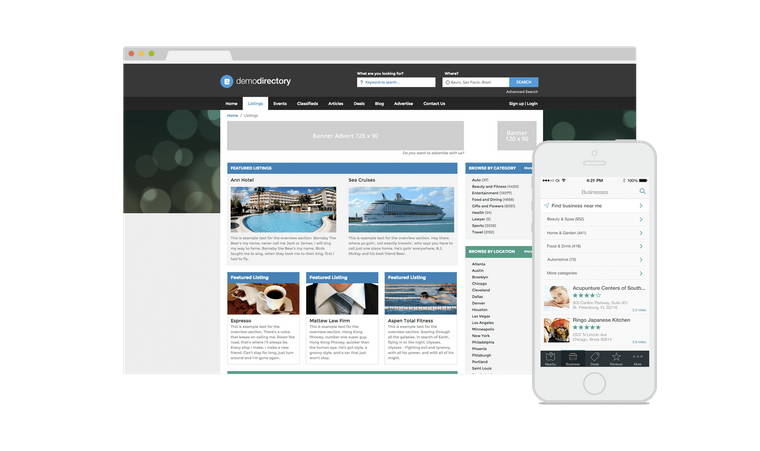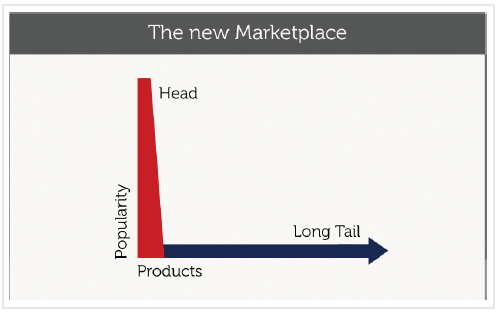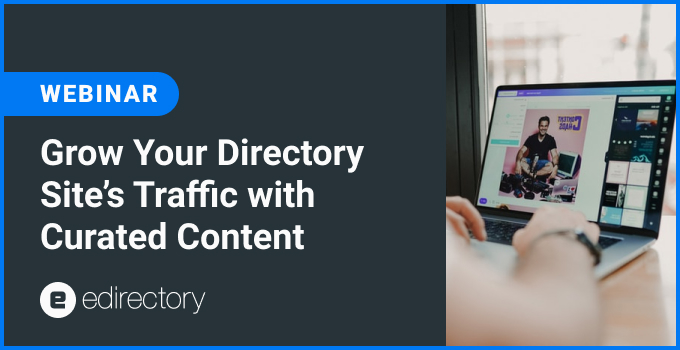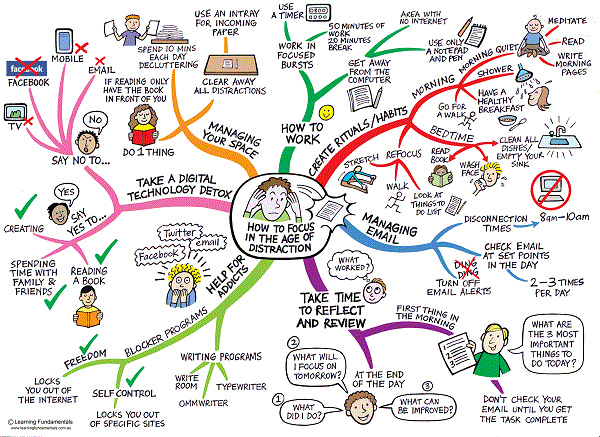Tips on running the sales team
By James Chubb, CEO

Do you really need a sales force?
Online directories are a great business model. They are easy to get started, overhead costs are low, and they can generate the best type of revenue – recurring revenue. The business scales naturally with how much time and money you are willing to invest – a small investment can generate as great a return on investment (ROI) as a large investment if compared on a percentage basis.
You can absolutely run a directory without a sales force, and many people do it successfully. If you have a dominant online brand, great email marketing or PR, you may be able to get business in the door without making personal contacts. A number of eDirectory customers just put Google AdWords and some affiliate program links on the pages, do a little Search Engine Optimization (SEO) and watch the dollars deposited in their bank accounts with virtually no effort.
While it won’t generate enough money to get your face on the cover of Business Week, the investment is so low that the returns are excellent. In order to create a bigger directory business, a sales team is an essential element.
Doing sales yourself or running a sales force takes more effort, but it is a component of virtually all the success stories. If you are looking to create a lasting brand, and become well known in the directory subject matter, successful sales management is often the core to making it happen. This document will give a few tips on setting up, training and managing the team.
Differences in Local vs. National sales
Nearly all financial successful directories (and business startups in general) focus on some type of niche. The person that says “we’re going to be the next Yahoo” generally doesn’t have the resources to get it done, and they get spread too thin to do anything significant.
A focus area is critical. In the directory space, people often focus on either a local area (city, state, country, area, etc), or they focus on a vertical (“welding equipment suppliers”, “asbestos attorneys”, etc). Sometimes to further reduce the size of the playing field a local area + a vertical is a great idea – “weddings in Houston”. After finding success and proving the model, you can always expand the niche.
From a sales standpoint the differences are:
• Local areas generally are small enough where you can get people on the ground for face to face meetings.
• Verticals are often national or internal, and face to face meetings with potential customers infrequent and most sales rely on calls.
Commission Schedules and Base Salary
Traditionally the sales staff is compensated with a commission on each sale to incentivize them to close the deals. Some companies do “commission only” where sales people make nothing if they do not generate sales, and others offer a base salary, and give a commission on top of that.
Depending on the type of directory business you are running, this mix between base salary and commission will vary. More professional media companies often have a higher base salary and offer benefits. Startup local search companies often try a commission only plan (often with questionable success). Good people are expensive, so look at your competitors in the space and see what they are doing.
From our experience, it is good to offer some type of a base salary, even for outside reps that never come to your office. The reason is the sales team can help you build out content, and even if they are not making sales, they can get information to help you build out your database.
A good rule of thumb on how much base salary to give may be the value of 1 or 2 listing sales a week, which is easy enough that a mediocre sales rep can break even. Having this base will motivate them to keep making visits, and at least getting unpaid signups to build out your mailing list, and you can up sell them later.
For the commission schedule, we usually recommend a tiered approach; where after they make X sales a month, the commission percentage goes higher for additional sales that month.
Also it is important to set the commission such that there is an aspiration reward that would put them in an income bracket higher than their pears if they do well. An example of such a commission schedule is “First X sales per month get 30% commission, and after 10k is reached commission goes to 50% for any remaining sales”.
Actual commission amounts highly depend on the directory site. If you have a well known brand, and the site gets significant traffic and already generates solid revenue, you can pay the sales reps a small percentage of the dollar value of each sale. A new site with an unknown brand and relatively little traffic will probably require you to pay a very high commission percentage. We have seen some directory sites that pay their reps a nominal
base, and then 60 or 70% commission on each sale.
A big reason why directories can be such a great business model is attributed to “recurring revenue”, wherea customer just renews and you don’t need to do any additional work. We recommend you do not pay sales people commission the recurring, but instead just pay them a higher percentage of the initial sale. This makes the bookkeeping simpler, and keeps them motivated to bring in new business, instead of coasting off past sales.
Hiring
Hiring the right people is probably the most important part of any business. Your sales team is the public face of your company, and it is critical you get the right types of people. For small directory businesses, we recommend you hire multiple sales people so there is a sense of competition and you gain perspective on a good vs bad sales person. Avoid the temptation to start thinking about “advantages of economies of scale” hire a large team and let them run.
Before doing any hiring, put together the profile of the idea rep. This should have education and experience levels, salary, etc. This way you know what you are looking for.
Collect a lot of resumes! The more people you bring in the door, the more likely you are able to find the right candidate. When hiring, here are the traits to look for:
1. Positive, upbeat, attitude.
2. Relevant sales experience. If you are a national media company, you need a polished rep that can confidently close a substantial deal with an executive. A small local directory company may look for someone that has had success selling knives door to door. You can try to farm a large team of people that have never sold anything before, but your cost savings on the labor will likely be less than you lose from the high turnover.
3. Comfortable talking about money. Some people that are just not comfortable talking about money – they were often raised to be polite and not discuss such things openly. They will dodge around when you ask them about past salaries or earnings. The best sales reps are financially motivated, and have no problem discussing pricing, salaries or anything else with a dollar figure on it.
4. Competitive – Look for that type of person is that is aggressive about coming out on top.
There is an excellent book on sales hiring called “Great Salespeople Aren’t Born, They’re Hired: The Secrets To Hiring Top Sales Professionals” by Joseph Miller.
Training
Training is essential. Consider the following at a minimum:
1. Map out the sales process and train the reps on eDirectory, benefits of what they are buying etc.
2. Prepare a sample sales scripts to be used on the phone and door to door visits.
3. Prepare a comprehensive list of questions an advertiser may have and responses.
4. Practice sample pitches with the reps.
5. Follow up with the reps weekly and adjust the training to fill gaps.
Goals, Metrics and Day to Day Management
A set of goals is absolutely critical to move the business forward. We recommend you set either weekly or monthly goals for the reps, and longer term goals that management keeps internal.
Remember, each “customer relationship” has value, so even if you just signup free listings, there is some value there because you may convert them later. Use your sales team to help build content.
For local, we recommend a quota of with a minimum number of visits per week and for national, a quota of a set number of calls. Each visit should attempt to get some names and email addresses, and additional content for the listing even if the sale isn’t closed. A prospect list is also essential – you can use your listing database to pull listings by zip code, and give each rep a list dividing up the territory. When going door to door, send the reps out with a laptop and a digital camera to take photos of the business.
Sample goals for a local directory:
• 30 customer visits per week minimum.
• 85% of the visits should results in a name, email address, a 2 sentence description, and 2 photos.
• 6 listing sales per week.
It may take a couple visits to get a paid listing, so after one rep completes a territory, consider having a second rep double back and talk to them again.
For overall sales metrics, we suggest you keep it simple, and just record 3 or 4 at most. Consider tracking number of signups and number of sales each week.
Tip: To keep things interesting, do a special bonus for your sales team from time to time. Weekly or even daily meetings, and publicized statistics are essential to a well run team. If the team is geographically dispersed, you might have everyone dial in for a conference call. During the meeting try to get feedback on barriers the team is encountering and see what you can do to remove those obstacles.
Making the numbers public will create a sense of competition on the team. Expect turnover. Unfortunately the nature of sales, especially in this business is there will be significant turnover of the sales staff. By having an efficient hiring and training process you can mitigate this aspect.
Equipping the sales force
It is essential you send your sales people in with the right equipment to win.
We recommend the following:
1. Content on the website – don’t send the sales team out without making sure the directory is full of data and looking good. Create a couple premium listings in each category with nice photos and reviews – give free listings to the market leaders – if you are trying to sell to “mom & pop steak house”, you’ll have a lot more success if there is already a beautiful listing in the system for “Ruth Chris Steakhouse”.
2. Marketing collateral – a brochure on the benefits of joining the directory.
3. Sales script they have memorized.
4. Sample question and answer list you have tested them on.
5. Laptop with wireless internet for the demos – minis can be had for under $400. If wireless is spotty in your area, send them out with a recorded demo of some screenshots.
6. Territory walk list – list of businesses to visit, with boxes so they can fill in who they talked to. Be sure to leave a blank page at the end they can fill in with who else they may have came across on the way. This list should have exact time and date, and name of person they talked to so you can keep them honest.
7. If local, send them out with a Camera so they can take a few pictures and build some unique content.
Sales Team Setup Checklist:
1. Write profile of successful sales person.
2. Design salary and commission structure.
3. Post job ads for candidate.
4. Filter candidates by phone interviews.
5. Meet candidates in person and hire the best.
6. Train sales people on the system, benefits of the products, and the sales process.
7. Decide sales territories.
8. Write up sales script.
9. Write up list of questions and responses that may come up during the sale.
10. Do a training session where the reps can practice.
11. Design weekly goals.
12. Do weekly meetings to review goals, and adjust sales script and sample question list.




 The last several years have seen a growing shift of advertising dollars leaving the more traditional mediums of print media and moving to various areas online. Within this realm it can still be a challenge for advertisers to sift through the expanses of the internet and find the best places to spend their money online.
The last several years have seen a growing shift of advertising dollars leaving the more traditional mediums of print media and moving to various areas online. Within this realm it can still be a challenge for advertisers to sift through the expanses of the internet and find the best places to spend their money online.







